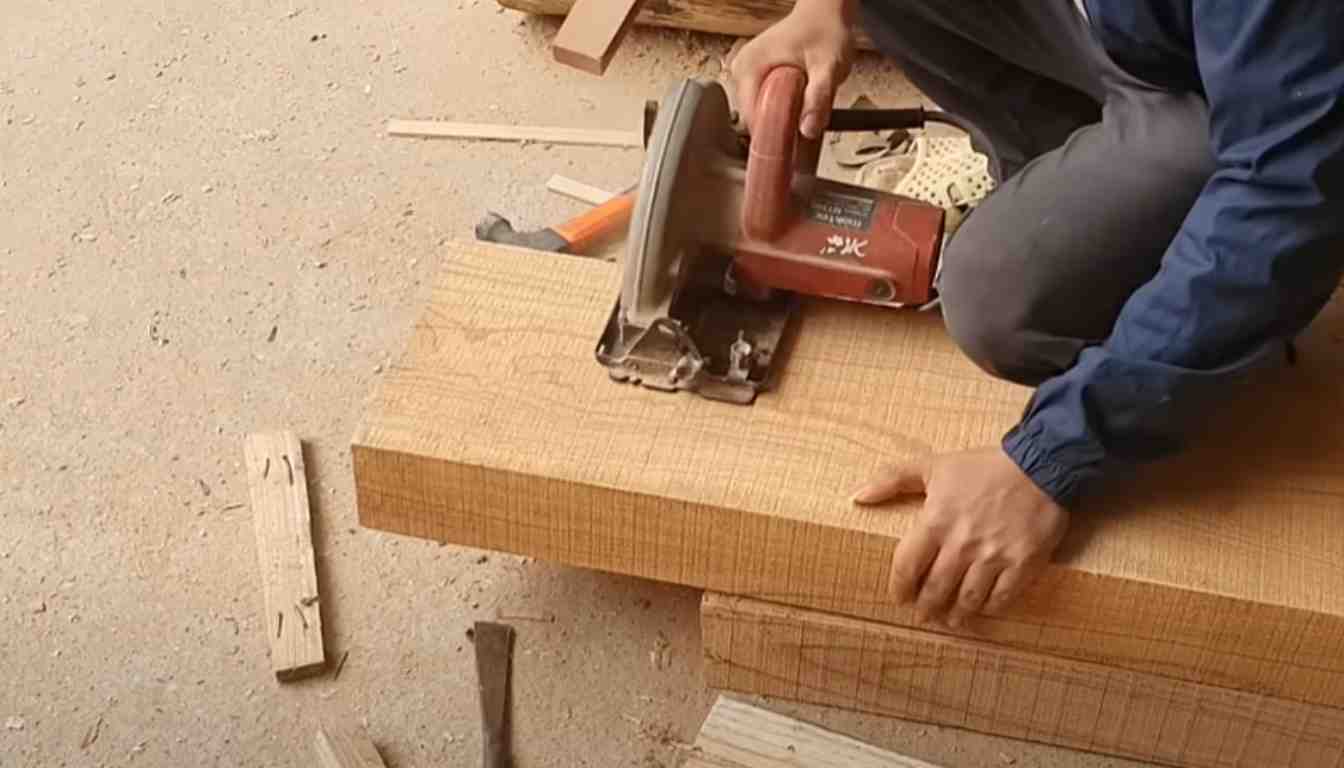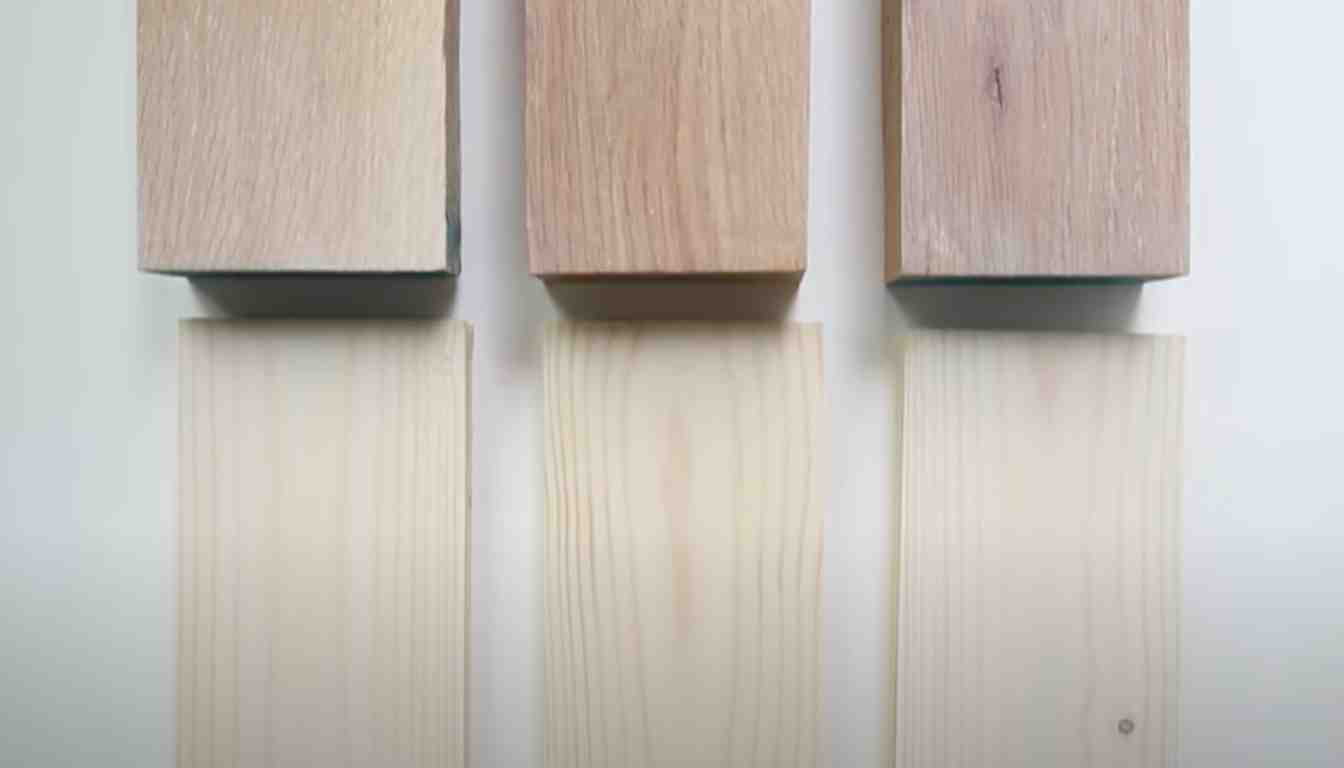Whitewood is a general term used for various light-colored softwoods, while pine is a specific type of whitewood with distinct grain patterns and durability. Whitewood and pine are two popular choices for furniture and construction projects due to their light color and affordability.
Both materials come from different species of softwoods and offer different qualities and characteristics. Understanding the difference between whitewood and pine can help you make an informed decision when choosing the right material for your project. Whitewood is a general term used to describe various light-colored softwoods, such as spruce, fir, and cedar.
They are typically less expensive compared to hardwoods and are commonly used for framing, moldings, trim, and general construction purposes. Whitewood has a light color, which makes it suitable for staining or painting to achieve various finishes. On the other hand, pine is a specific type of whitewood that comes from the Pinus genus of trees. Pine is known for its distinct grain patterns, durability, and ease of staining or painting. It is often used for furniture, flooring, trim, paneling, and other interior applications. Pine has a yellowish or pale brown color and can be found in different grades and qualities, including knotty pine and clear pine.
While whitewood and pine share similarities in terms of appearance and affordability, pine tends to offer better durability and a more defined grain pattern. However, the specific qualities of each material can vary depending on the species, grade, and treatment. Ultimately, the choice between whitewood and pine will depend on your specific project requirements, budget, and personal preferences.
2. Characteristics Of Whitewood
Whitewood is commonly used in various woodworking projects due to its unique characteristics. Understanding these characteristics is important when deciding whether to choose whitewood or another type of wood, such as pine. In this section, we will explore the natural appearance, durability and strength, as well as the resistance to decay and insects that whitewood offers.
2.1 Natural Appearance
Whitewood is known for its light and pale color, which enhances its natural beauty. This wood species features a smooth and even texture that adds a touch of elegance to any project it is used for. The light tone of whitewood creates a modern and clean aesthetic that can complement a variety of interior or exterior designs.
2.2 Durability And Strength
When it comes to durability and strength, whitewood is an excellent choice. It is known for being a sturdy and reliable wood option, making it suitable for a wide range of applications. Whether you are constructing furniture, building cabinets, or even crafting decorative items, whitewood’s strength ensures that your creations will stand the test of time.
2.3 Resistance To Decay And Insects
One of the most significant advantages of whitewood is its resistance to decay and insects. This wood species naturally possesses certain properties that make it less prone to rotting or being damaged by pests. This quality is especially important for outdoor projects, such as decks or fences, where exposure to moisture and insects is more likely. Choosing whitewood for such projects can help ensure their longevity and minimize the need for constant maintenance.

3. Characteristics Of Pine
In this section, we will delve into the key characteristics of pine wood. Understanding the natural appearance, durability and strength, as well as the resistance to decay and insects, will help you make an informed decision when it comes to choosing between whitewood and pine for your projects.
3.1 Natural Appearance
Pine wood boasts a charming, natural appearance that adds warmth and character to any space. Its light color variation ranges from pale yellow to light brown, making it a versatile choice for interior design and woodworking projects. The distinctive grain pattern of pine, with occasional knots and swirls, provides a rustic and welcoming aesthetic. This makes pine a popular choice for those seeking a natural and cozy feel in their homes.
3.2 Durability And Strength
When it comes to durability and strength, pine wood holds its ground. While it may not be as dense as some hardwoods, pine is known for its impressive strength and resilience. It can withstand moderate wear and tear, making it suitable for a variety of applications such as furniture, cabinets, and even flooring. With proper care and maintenance, pine furniture and other items can last for many years, ensuring you get value for your investment.
3.3 Resistance To Decay And Insects
Pine wood exhibits a natural resistance to decay and insects, particularly when pressure-treated or properly sealed. This makes it an ideal choice for outdoor projects such as decks, fences, and garden furniture. The natural oils present in pine wood act as a deterrent to insects, reducing the risk of infestation. Additionally, with proper treatment, it becomes less susceptible to rot and decay caused by moisture, extending its lifespan and ensuring its longevity in various environmental conditions.
4. Common Uses Of Whitewood
Whitewood is a versatile wood variety that finds its applications in various industries due to its exceptional properties and affordability. Let’s take a closer look at some of the common uses of whitewood:
4.1 Furniture
Whitewood is widely utilized in the manufacturing of furniture, thanks to its affordability and ease of workability. The light color and smooth texture of whitewood make it an excellent choice for creating elegant and eye-catching pieces. From sturdy dining table sets to stylish bed frames, whitewood furniture can complement any interior design theme. Additionally, whitewood furniture is known for its durability, ensuring that your investment stands the test of time.
4.2 Interior And Exterior Trim
When it comes to enhancing the aesthetic appeal of a space, whitewood is often the go-to option for interior and exterior trim. Its light color and straight grain make it perfect for adding a touch of elegance to window frames, door frames, baseboards, and crown moldings. The versatility of whitewood allows it to be easily painted or stained to match any desired color scheme, making it an ideal choice for both modern and traditional architectural styles.
4.3 Cabinetry
If you’re looking to renovate your kitchen or bathroom, whitewood cabinetry can be an excellent choice. Its natural beauty and durability make it a popular material for crafting cabinets that can withstand everyday wear and tear. Whitewood cabinetry offers ample storage space while adding a touch of warmth and sophistication to the overall design. Its versatile nature allows for customization through staining or painting, giving you the freedom to create a unique look that suits your personal style.
By leveraging the unique characteristics of whitewood, these common uses demonstrate its significant impact and practicality in various industries. Whether it’s for furniture, interior and exterior trim, or cabinetry, whitewood offers affordability, durability, and aesthetic appeal all in one package.
5. Common Uses Of Pine
Pine is an incredibly versatile wood that has found its way into various industries and applications. From construction to furniture-making, pine has been a popular choice for centuries. Let’s explore some of the common uses of pine and understand why it is such a sought-after material.
5.1 Construction
Pine wood is widely used in the construction industry due to its strength, durability, and cost-effectiveness. It is commonly used in framing and structural components of buildings. The straight grain and uniform texture of pine make it easy to work with, allowing builders to shape and cut it into various forms. Whether it’s for building walls, roofs, or flooring, pine is a reliable choice that can withstand the test of time.
5.2 Furniture
Pine is a popular choice for furniture-making due to its beautiful natural grain patterns and affordable price. From rustic farmhouse-style tables to modern Scandinavian-inspired chairs, pine furniture adds warmth and character to any interior. Its light color allows for easy staining and finishing, giving furniture makers the flexibility to create a wide range of designs. Pine furniture is not only aesthetically pleasing but also sturdy and long-lasting, making it a versatile choice for every home.
5.3 Flooring
Pine flooring offers a timeless appeal that can transform any space into a cozy and inviting atmosphere. The soft golden color of pine adds warmth to a room while the natural knots and grain patterns provide a unique visual appeal. Pine flooring is known for its durability and resilience, capable of withstanding the wear and tear of daily foot traffic. Its affordability and easy installation make it a popular choice for homeowners looking to upgrade their flooring without breaking the bank.
6. Comparing Whitewood And Pine
When it comes to choosing the right wood for your DIY projects or furniture, Whitewood and Pine are two popular options to consider. Both types of wood have their own unique characteristics that make them suitable for different purposes. In this section, we will compare Whitewood and Pine based on their cost, maintenance requirements, and aesthetics.
6.1 Cost
Cost is often a crucial factor to consider when deciding between Whitewood and Pine. In terms of affordability, Pine takes the lead. Pine is widely available and is known for its cost-effectiveness, making it a popular choice for budget-conscious individuals. On the other hand, Whitewood tends to be slightly more expensive due to its higher quality and durability.
6.2 Maintenance
Maintenance is an important aspect to consider when it comes to long-term durability and upkeep of your wooden furniture or projects. In terms of maintenance, both Whitewood and Pine require regular care to ensure their longevity.
With Pine, you will need to be extra cautious as it is more susceptible to scratches and dents. However, the good news is that Pine is relatively easy to maintain. Regular dusting and occasional polishing can help keep your Pine furniture looking its best.
On the other hand, Whitewood is known for its natural strength and durability. It is less prone to scratches and dents compared to Pine. While it requires regular cleaning and maintenance to preserve its beauty, Whitewood generally requires less attention and is more resistant to wear and tear.
6.3 Aesthetics
When it comes to aesthetics, both Whitewood and Pine offer their unique charm.
Pine has a lighter color with prominent grain patterns, giving it a warm and rustic look. It is often preferred in casual or country-style interiors. The natural knots and imperfections in Pine add character to the wood, appealing to those who appreciate a more natural and organic feel.
Whitewood, on the other hand, is known for its smooth and even texture. It has a lighter and more consistent color, making it a popular choice for modern and contemporary designs. Whitewood’s clean and sleek appearance lends itself well to a minimalist aesthetic.
Ultimately, the choice between Whitewood and Pine depends on your specific needs and preferences. Pine offers affordability and a rustic charm, while Whitewood provides durability and a modern aesthetic. Consider the cost, maintenance requirements, and aesthetic appeal to make an informed decision for your next woodworking project or furniture purchase.
7. Factors To Consider When Choosing Between Whitewood And Pine
When it comes to selecting the right type of wood for your project, there are several factors to consider in order to make the best decision. Both whitewood and pine are popular choices due to their affordability, versatility, and natural beauty. However, each type of wood has its own distinct characteristics and benefits. In this section, we will explore the 7 key factors that you should take into account when choosing between whitewood and pine.
7.1 Project Requirements
Before making a decision, it’s important to understand the specific requirements of your project. Evaluate the purpose, function, and desired aesthetic of the final product. Consider whether the wood will be used for indoor or outdoor applications, as this will impact the durability and resistance to weather elements. Additionally, think about the level of wear and tear the wood will be subjected to, as this will determine the required hardness and strength. By fully understanding your project requirements, you can choose the wood type that will best meet your needs.
7.2 Budget
Another crucial factor to consider is your budget. Pricing can vary between whitewood and pine, so it’s important to determine how much you are willing to spend on your wood. Keep in mind that while pine is generally more affordable, it may have some limitations in terms of strength and durability compared to whitewood. However, if you are working on a tight budget or a less demanding project, pine can still be a suitable option. Consider your financial constraints and weigh them against the qualities of each wood type.
7.3 Personal Preferences
Personal preferences should also play a role in your decision-making process. Consider the visual appearance of the wood and how it aligns with your taste and style. Whitewood has a creamy white color with occasional knots, giving it a more rustic and natural look. Pine, on the other hand, has a pale yellow to light brown hue with distinctive knots, adding character and warmth to any project. Choose a wood type that not only meets your project requirements but also resonates with your personal preferences.

Frequently Asked Questions For Whitewood Vs Pine
Which Is Better Whitewood Or Pine?
Whitewood is a type of pine, and both have their pros and cons. Whitewood is softer and lighter, making it easier to work with. Pine, on the other hand, is more durable and has a diverse grain pattern. Ultimately, the choice depends on your specific needs and preferences.
Is Whitewood A Strong Wood?
Yes, Whitewood is a strong wood. It has good durability and strength properties, making it suitable for various applications like furniture and construction projects. Its strength makes it a popular choice among builders and craftsmen.
What Is Whitewood At Lowes?
Whitewood at Lowes is a type of wood available at Lowes home improvement stores. It is a popular choice for DIY projects and construction due to its durability and versatility.
What Kind Of Wood Is Whitewood At Home Depot?
Whitewood at Home Depot is a type of wood that is commonly used for various home improvement projects. It is known for its light color and smooth texture, making it suitable for painting and staining.
Conclusion
Both whitewood and pine have their own unique qualities and characteristics that make them suitable for various projects. When choosing between the two, it’s essential to consider factors such as durability, sustainability, and cost. Ultimately, the decision will depend on your specific needs and preferences.
Whether you opt for the sturdy and versatile whitewood or the affordable and versatile pine, both options provide excellent choices for your woodworking projects.


